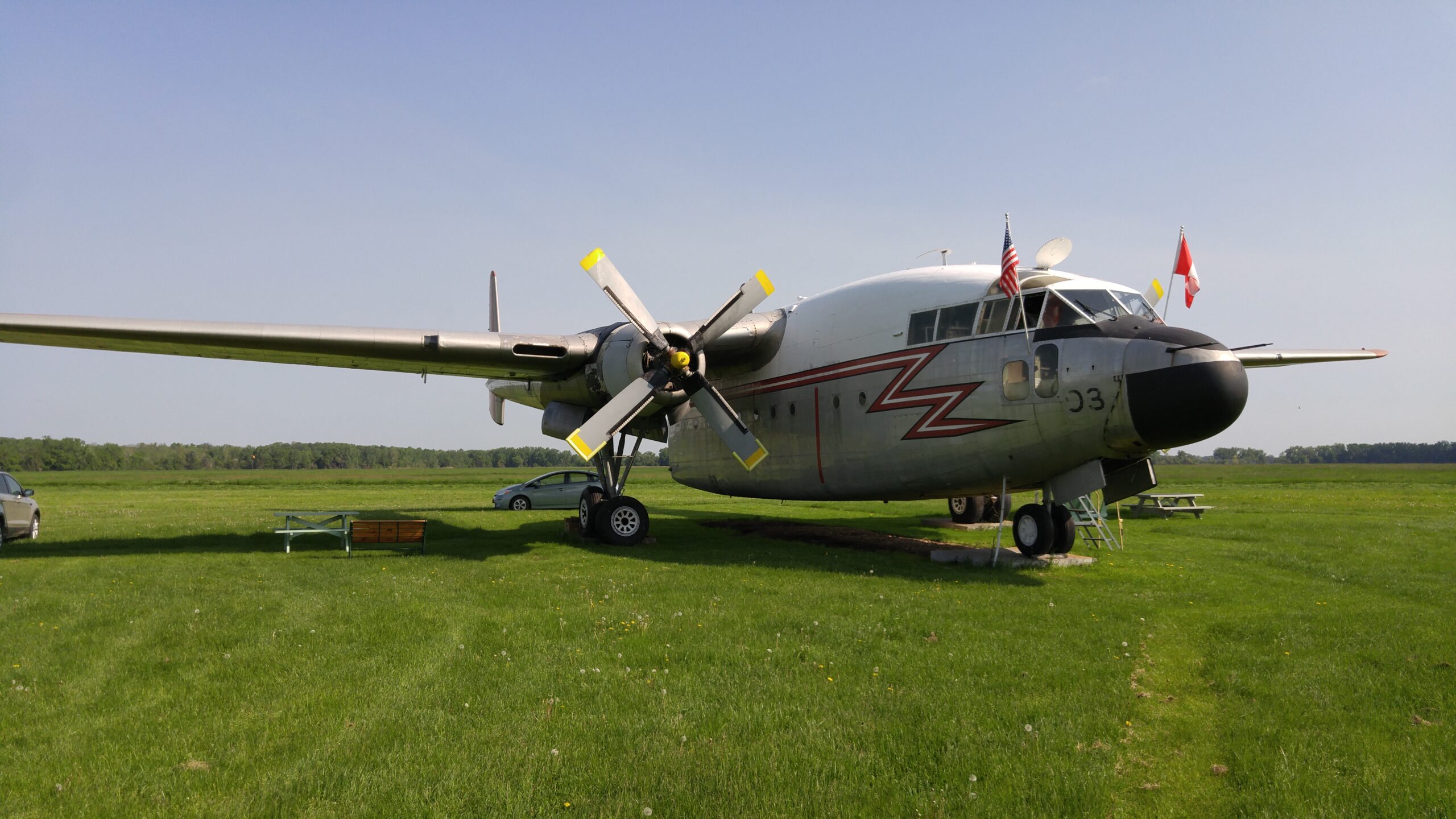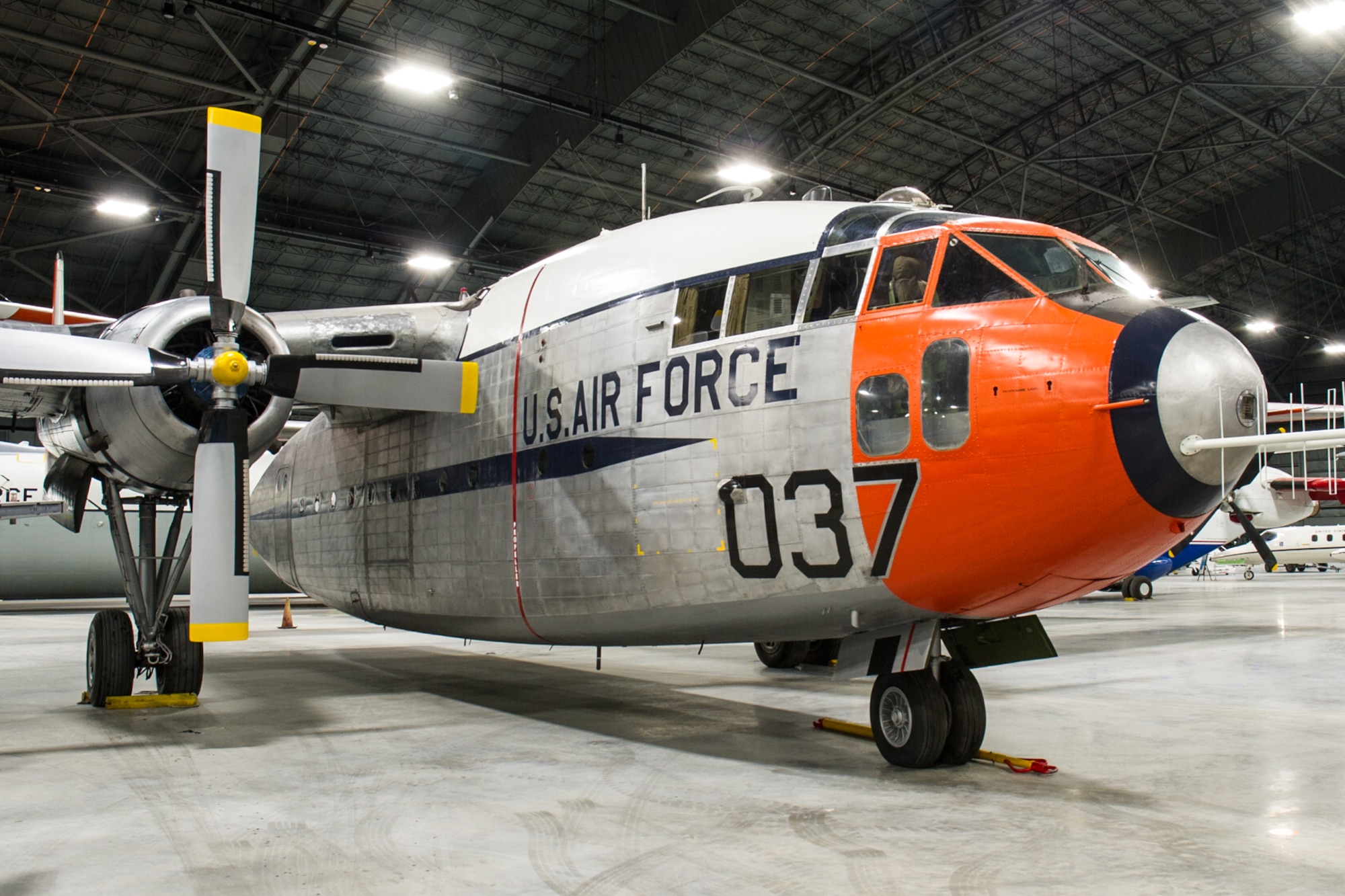C 119 Aircraft - Learn how you can support the museum through the AMC Museum Foundation's annual summer fundraiser. See more →
The flying boxcar was developed by Fairchild in the 1940s as a special military cargo aircraft for the US. From the 1940s to the late 1960s, the C-119 was modified and redesigned as new technologies and uses developed. Our boxcar is a G, the last major production model equipped with Wright R-3350 engines. Four hundred and eighty-four were built. It was used by the Royal Canadian Air Force, by Hawkins & Powers Aviation as a fire bomber and by Richard Dreyfuss in the film Always.
C 119 Aircraft

The C-119 Flying Boxcar, developed from the Fairchild C-82 Pocket, was a twin-engine, twin-boom, twin-tail transport designed to carry cargo, personnel, litter patients, and mechanized equipment, and to drop cargo and troops . By parachute (using the "leaf" cargo doors at the rear of the cabin).
Aeroplane Heaven Fairchild C 119 The Flying Boxcar (fsx/fx:se/p3dv2 V4)
The first C-119 made its first flight in November 1947, and by the time production ended in 1955, over 1,150 C-119s had been built. The aircraft was widely used by the USAF as a transport during the Korean conflict. In South Vietnam, the aircraft again entered combat, this time in a ground support role as AC-119G "Shadow" and AC-119K "Stinger" weapons mounted sidefire weapons capable of firing up to 6,000 rounds per minute. per weapon. When operating as a transport, the C-119 can carry up to 62 fully equipped soldiers or 30,000 pounds of cargo. Perhaps Boxcar's most notable achievement was when it captured the world's first return capsule from space. It happened southwest of Honolulu, Hawaii, on August 19, 1960, when it got stuck at 8,000 feet in the descent attached to the Discovery XIV satellite.
To 114th Communications Flight, Capodichino, Italy (UN Forces in Egypt); Shuttles flew between Capodichino and Abu Suir in Egypt during the Suez crisis
To 10 Technical Services Detachment, Edmonton, Alberta (received AN/APS-42 radar in enlarged nose); Returned to 114th Liaison Flight after modifications
Sold to Hawkins & Powers, Greybull, WY, registered N3559 (Hawkins & Power A/C #137) and converted to air tanker for firefighting. Two booms and a tall wing suspend a rudimentary box-shaped body designed to carry large amounts of cargo. and paratroopers for delivery to the front line. It is therefore no surprise that the design quickly earned its nickname "The Flying Box Car."
Aeroplane Heaven C 119 Fairchild
By the time production ended in 1955, over 1,100 examples had been built in various configurations, including heavily armed "Shadow" and "Stinger" weapons.
The venerable freighter saw extensive use in the Korean War, dropping thousands of tons of much-needed supplies and countless parachutes. It served with the US. it. Navy, US it. Marine Corps, and US it. Air Force.
The USAF's Strategic Air Command operated the C-119 from 1955 to 1973, and the type served in many covert operations, including the aerial collection of secret film from spy satellites.

Many other countries also used "boxcars" and the aircraft also served in civilian clothes as tankers and bulk carriers.
Fairchild C 119 Flying Boxcar
Our model has many special features including a fully detailed cargo compartment, deployable parachutes and a cargo drop function. The cockpit is authentically modeled and offers an extremely realistic flight experience.
You need Orbx Central to download and install this product. Orbx Central runs on Windows 7+, macOS and Linux. Internet connection is also required. The Fairchild C-119 Flying Boxcar (Navy and Marine Corps designation R4Q) was an American military transport aircraft developed from the World War II-era Fairchild C-82 package designed to transport cargo, personnel and ordnance. Patits and mechanized equipment and parachute dropping of cargo and troops. The first C-119 made its maiden flight in November 1947, and by the time production ceased in 1955, over 1,100 C-119s had been built.
The Air Force C-119 and Navy R4Q were originally redesigns of an earlier C-82 batch built between 1945 and 1948. The batch provided service to the Air Force's Tactical Air Command and Army Airlift Service for nearly nine years. Some serious problems were found with its design. All of these are covered in C-119.
Unlike the C-82, the cockpit was moved forward to fit flush with the nose, rather than its previous location above the cargo hold. This resulted in more usable cargo space and larger loads than the C-82 could hold. The C-119 also had more powerful engines and a wider and stronger fuselage. The first C-119 prototype (designated XC-82B) first flew in November 1947, C-119B deliveries from Fairchild's Hagerstown, Maryland factory began in December 1949.
Aircraft Photo Of N15501
In 1951, Hry J. Kaiser was contracted to assemble additional C-119s at the Kaiser-Frazer Auto Works located in the former B-24 plant at Willow Run Airport in Belleville, Michigan. Originally built by Kaiser, the C-119F differed from the Fairchild aircraft in that it used Wright R-3350-85 Duplex Cyclone engines instead of Fairchild's Pratt & Whitney R-4360 Wasp main radial engine. Kaiser built 71 C-119s (AF Ser. Nos. 51-8098 through 51-8168) at Willow Run in 1952 and 1953 before converting the plant to produce the planned Chase C-123, which was never developed. Fairchild balked at Kaiser's sub-contracting, and efforts were made through political channels to shut down Kaiser's production, which may have been successful. After Kaiser discontinued the C-119, the C-123 contract was awarded to Fairchild instead. Most of the Kaiser-built aircraft were exported to the US.
The AC-119G Shadow variant is equipped with four six-barreled 7.62 mm (0.300 in) NATO miniguns, armor plating, rocket launchers and night infrared devices. Like the AC-130 before it, the AC-119 proved to be a pot weapon. The AC-119 was made more lethal by the introduction of the AC-119K Stinger, which added two 20 mm (0.79 in) Gerald Electric M61 Vulcan cannons, improved avionics and two underwing Gerald Electric J85-GE-17 turbojets, adding nearly 6,000 lbs (27 kN) of thrust.
Other larger variants included the EC-119J, used for satellite tracking, and the YC-119H Skyvan, a prototype with larger wings and a tail.

In civilian service, many C-119s have the "jet-pack" modification, which contains a 3,400 lb (15,000 N) Westinghouse J34 turbojet engine in a nacelle above the fuselage.
Project Charlie 119 To Bring A Piece Of History Back To Columbus
The aircraft saw extensive action as a troop and equipment transport during the Korean War. In July 1950, four C-119s were given to the FEAF for maintenance trials.
Two months later, the C-119 was deployed with the 314th Troop Carrier Group and served throughout the war in Korea.
Eight US Air Force C-119 flying boxcarts from the 314th Troop Carrier Group flew over a narrow point on the evacuation route between Koto-ri and Hungnam, blocking the withdrawal of UN troops. Troops.
They are used to drop movable bridge sections by parachute. The bridge, which consisted of eight separate six-foot, 2,900-pound sections, was lowered one at a time with two parachutes on each section. Four of these sections, along with additional wooden pullouts, were successfully assembled by Marine Corps combat commanders and the U.S. Army.
Aircraft Photo Of N5216r
From 1951 to 1962, the C-119C, F, and G models served as first-line combat cargo units for the US Air Force. it. Air Forces in Europe (USAFE) and Far East Air Forces (FEAF) and operated as cargo carriers with the 60th Troop Carrier Wing, the 317th Carrier Wing and the 465th Carrier Wing in Europe, based primarily in Germany and France, with About 150 aircraft flying anywhere from Greenland to Indiana. A similar number of aircraft served in the Pacific and the Far East. In 1958, the 317th was absorbed by the 465th and transitioned to the C-130, but units of the original 60th Carrier Wing, the 10th, 11th and 12th Carrier Squadrons, continued to fly the C-119 until 1962. - Operational units not Affiliated with the Air Force Reserve and National Guard to fly "boxcars".
Perhaps the most notable use of the C-119 was the recovery of balloons, UAVs and EV-satellites. The technique was first used in 1955 when a C-119 was used to retrieve unmanned targets from the Ryan AQM-34 Firebee.
The 456th Carrier Wing, attached to the Air Force's Strategic Air Command (SAC) from 25 April 1955 to 26 May 1956, used C-119s to retrieve instrument packages from high-altitude reconnaissance balloons. C-119s from the 6593rd Test Squadron at Hickam Air Force Base, Hawaii, made several aerial recoveries of film return capsules during the early years of the Corona spy satellite program. On August 19, 1960, the C-119 recovery of film from the Discoverer 14 mission from Corona was the first successful recovery of film from an orbiting satellite and the first aerial recovery of an object returned from Earth orbit.
The C-119 was planned to see extensive service in French Indochina, beginning in 1953 with aircraft secretly loaned by the CIA. to French forces for troop support.
Fairchild C 119 Flying Boxcar At The Museum Of Aviation Robbins Afb, Ga. Editorial Stock Photo
C 119 aircraft for sale, fairchild c 119 flying boxcar, c 141 starlifter aircraft, c&d aircraft heaters, c 119 flying boxcar, 1 72 c 119, c 47 aircraft, aircraft c check, c 5 galaxy aircraft, f 119 aircraft, c 130 military aircraft, c 119 for sale

0 Comments